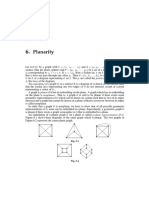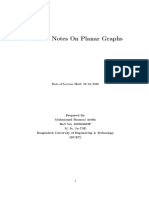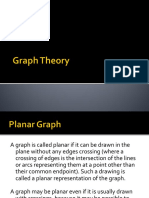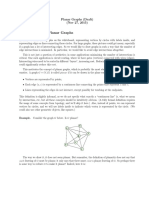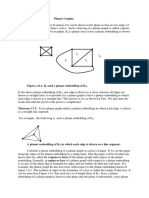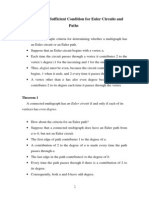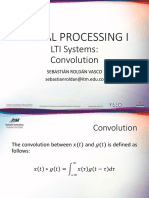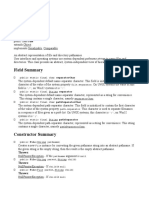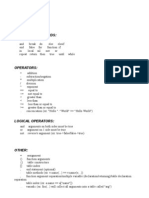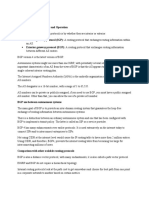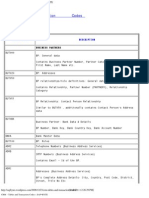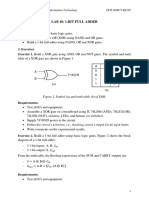0% found this document useful (0 votes)
107 views31 pagesModule 4 - Planar Graphs
A graph is planar if it can be drawn on a plane without edge intersections, while a nonplanar graph cannot. Kuratowski's theorem identifies K5 and K3,3 as the simplest nonplanar graphs, and various properties and theorems, including Euler's formula, help determine planarity. Detection of planarity can be performed through elementary reduction and checking for homeomorphic graphs.
Uploaded by
yuvaraaja25Copyright
© © All Rights Reserved
We take content rights seriously. If you suspect this is your content, claim it here.
Available Formats
Download as PDF, TXT or read online on Scribd
0% found this document useful (0 votes)
107 views31 pagesModule 4 - Planar Graphs
A graph is planar if it can be drawn on a plane without edge intersections, while a nonplanar graph cannot. Kuratowski's theorem identifies K5 and K3,3 as the simplest nonplanar graphs, and various properties and theorems, including Euler's formula, help determine planarity. Detection of planarity can be performed through elementary reduction and checking for homeomorphic graphs.
Uploaded by
yuvaraaja25Copyright
© © All Rights Reserved
We take content rights seriously. If you suspect this is your content, claim it here.
Available Formats
Download as PDF, TXT or read online on Scribd
/ 31










